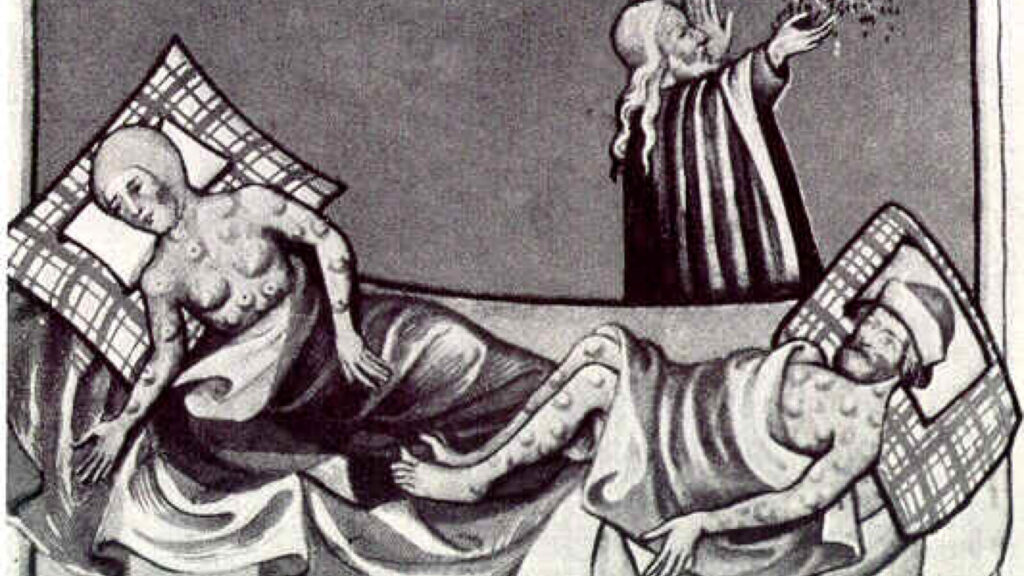Black women of African descent had a higher chance of dying in London’s great plagues than other people, new research into human remains at the Museum of London has found.

Miniature out of the Toggenburg Bible (Switzerland) of 1411. The image depicts Moses in the background with two people suffering from the Biblical plague of boils described in Exodus 9:8-9.
Often referred to today as the ‘Black Death’, the outbreak of 1348-1350, was widely known at the time as the Great Pestilence or Great Mortality. This new report is the result of the first archaeological exploration showing how racism influenced a person’s risk of death during the Great Pestilence. It will inform galleries at the London Museum’s new home in Smithfield, opening in 2026.
The research looked at data on bone and dental changes, is based on 145 individuals from three cemeteries, and found significantly higher proportions of people of colour and Londoners of Black African descent in plague burials compared to non-plague burials. The research also found that black women of African descent were significantly more likely to die from the plague than the men were.
The likelihood of dying from the Great Pestilence was highest amongst those who already faced significant hardship, including exposure to serious famine events that hit England during this time. The research concluded that higher death rates amongst people of colour and those of Black African descent was a result of the “devastating effects” of “premodern structural racism” in the medieval world. Social and religious divisions based on origin, skin colour and appearance were present in both medieval England and Europe.
Commenting on the research, Dr Rebecca Redfern, Senior Curator of Archaeology at Museum of London, said: “We have no primary written sources from people of colour and those of Black African descent during the Great Pestilence of the 14th century, so archaeological research is essential to understanding more about their lives and experiences. As with the recent Covid-19 pandemic, social and economic environment played a significant role in people’s health and this is most likely why we find more people of colour and those of Black African descent in plague burials.”
The Great Pestilence of 1347-1353 was a deadly infectious disease that swept across Asia and Europe, killing millions of people.
Modern scientific research has identified this as a plague pandemic but in the mid-1300s people had no idea what the disease was or how to stop it. It arrived in London in the autumn of 1348 and lasted until the spring of 1350. An estimated 35,000 Londoners died, representing over half the population. So many people died that emergency cemeteries had to be set up to bury them. Such a loss of life left deep scars on society and the city’s population did not recover until the 1500s.
The plague was to return many times in the following centuries.
The study, to be published by Bioarchaeology International, was undertaken by Dr Rebecca Redfern (Senior Curator of Archaeology, Museum of London), Professor Sharon DeWitte (Biological Anthropologist, University of Colorado), Dr Joseph Hefner (Associate Professor of Anthropology, Michigan State University), and Dr Dorothy Kim (Assistant Professor of English, Brandeis University).







What is the TITLE of the research study, Black women of African descent more likely to die of medieval plague-The Great Pestilence of 1347-1353?? Who are the authors? date of publication? Source or publication?
That information is in the report, if you read it.
Name of publication, link to publication and names of authors of the repoirt are in the article you just read.
It is stated to have been accepted for publication in “Bioarchaeology International”- but checking their website it hasn’t been published yet.
The Guardian had a piece on the findings, which claimed to quote the subject numbers, but they are a bit strange – e.g. they don’t seem to give a significant chi-square. I’m certainly going to try and read the paper when it appears, if it doesn’t cost too much.